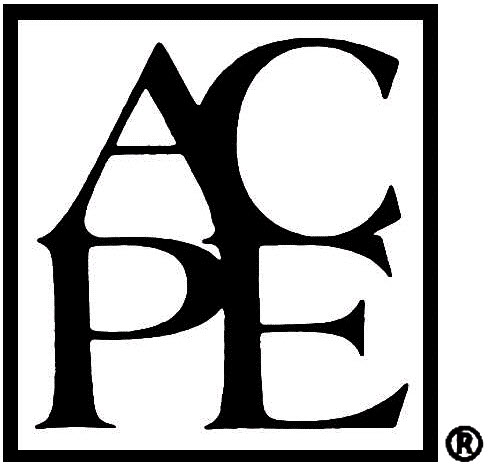Asenapine
Disease State Management/Drug Therapy CE for Pharmacy Techs
Are you a Pharmacist? Check out the Pharmacist version of this course.
Course Summary
Asenapine is a second-generation, atypical, antipsychotic medication that is known to be effective in the treatment of schizophrenia in adults. Asenapine is also used for maintenance treatment in bipolar I disorder as well as treatment for acute manic or mixed episodes associated with bipolar I disorder in adults and pediatric patients 10 years and older. The pharmacological profile and option of a sublingual route of administration with asenapine make it a unique antipsychotic drug of choice in emergency psychiatry cases, the pediatric population, and for maintenance treatment of mixed mood states. Individuals experiencing a manic episode are often treated with benzodiazepines and antipsychotics, although the specific effects of antipsychotics on hostility and aggression in patients with schizophrenia or bipolar disorder have received special attention from emergency clinicians.
Describe the basic pharmacological profile, use, and clinical outcomes of asenapine treatment
Identify the dosing and uses for asenapine
Compare the benefits and risks of asenapine use for patients with chronic mental illness compared to other antipsychotics
Identify the contraindications and potential side effects of asenapine
Course Syllabus
I. Introduction
II. Pharmacological Profile and Mechanism of Action
III. Dosing Recommendations for Asenapine
1. Bipolar I Disorder
2. Schizophrenia
3. Dosing Adjustments: Geriatrics, Renal and Hepatic Impairment
4. Drug-Drug Interactions
IV. Asenapine Treatment for Psychiatric Conditions
1. Bipolar I Disorder
2. Schizophrenia
V. Adverse Effects, Contraindications and Warnings
1. Elderly and Dementia
2. Temperature Regulation
3. Orthostatic Hypotension and Cardiovascular Conditions
4. Hematologic
5. Central Nervous System
6. Weight Gain, Hyperglycemia, and Dyslipidemia
7. Hyperprolactinemia
8. Gastrointestinal
9. Neuroleptic Malignant Syndrome (NMS)
10. Suicidal Behavior
11. Pregnancy and Breastfeeding
VI. Asenapine Case Studies
1. Case Study 1: Bipolar I Disorder with Mania
2. Case Study 2: Bipolar I Disorder
VII. Summary
- Read the course objectives and faculty planner disclosure
- Read the course material
- Complete the post-test with a minimum score of 70% and complete the course evaluation form.
- Results are automatically submitted to CPE Monitor
Faculty Planner Disclosure
The following individuals were involved in the development of this activity: Susan DePasquale, MSN, PMHNP-BC, Amanda Mayer, PharmD, and Jeff Goldberg, PharmD. There are no financial relationships relevant to this activity to report or disclose by any of the individuals involved in the development of this activity.
Unlabeled Use Disclosures
The information provided in this course is general in nature and it is solely designed to provide participants with continuing education credit(s). This course and materials are not meant to substitute for the independent, professional judgment of any participant regarding that participant’s professional practice, including but not limited to patient assessment, diagnosis, treatment and/or health management. Medical and pharmacy practices, rules, and laws vary from state to state, and this course does not cover the laws of each state; therefore, participants must consult the laws of their state as they relate to their professional practice. Healthcare professionals, including pharmacists and pharmacy technicians, must consult with their employer, healthcare facility, hospital, or other organization, for guidelines, protocols, and procedures they are to follow. The information provided in this course does not replace those guidelines, protocols, and procedures but is for academic purposes only, and this course’s limited purpose is for the completion of continuing education credits. Participants are advised and acknowledge that information related to medications, their administration, dosing, contraindications, adverse reactions, interactions, warnings, precautions, or accepted uses are constantly changing, and any person taking this course understands that such person must make an independent review of medication information prior to any patient assessment, diagnosis, treatment and/or health management. Any discussion of off-label use of any medication, device, or procedure is informational only and such uses are not endorsed hereby. Nothing contained in this course represents the opinions, views, judgments, or conclusions of RxCe.com LLC. RxCe.com LLC is not liable or responsible to any person for any inaccuracy, error, or omission with respect to this course, or course material.
Computer Hardware/Software Requirements
Please ensure the device you plan to use meets these requirements and specifications:
- Operating System: Windows 7,8,10, or 11 /Mac OS X 10.9 or later/iOS/Android
- Supported Browsers: Microsoft Edge, Firefox, Google Chrome, Safari, Opera
- A connection to the internet
- For Live Webinars or Conferences: GoToWebinar application for iOS, Android, Mac, or PC. You cannot 'call into' a live conference.
Rating: 4.96/5
Based on the ratings of 773 customers
- Target Audience: Pharmacy Tech
- Secondary Audiences: This educational activity is also for other healthcare professionals, such as nurses, physicians, or others who may be part of a healthcare team and may be interested in this educational topic. A healthcare team approach to patient care may be discussed in this activity, as applicable. No state board or professional organization has evaluated this activity to determine whether it meets the continuing education requirements of nurses, physicians, or other professions not listed under the “Target Audience” described above. Always verify with individual employers or supervisors whether they will accept this educational activity upon completion.
- Contact Hours: 1.0 (0.1 CEUs)
- Activity Release Date: 8/30/2022
- Activity Expiration Date: 8/30/2025
- Activity Type: Knowledge
- UAN: 0669-0000-22-026-H01-T
- Topic: Disease State Management/Drug Therapy
- CeBroker Number: 20-943122
Faculty:

RxCe.com, LLC is accredited by the Accreditation Council for Pharmacy Education as a provider of continuing pharmacy education.

RxCe.com, LLC, offers pharmacy technician continuing education courses for PTCB recertification. Pharmacy technician courses are indicated both in the Target Audience description and the ACPE UAN which will end with a "T".